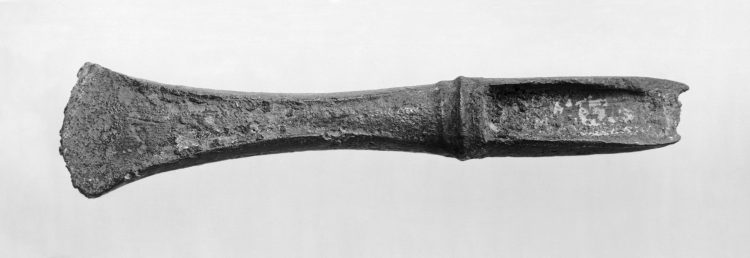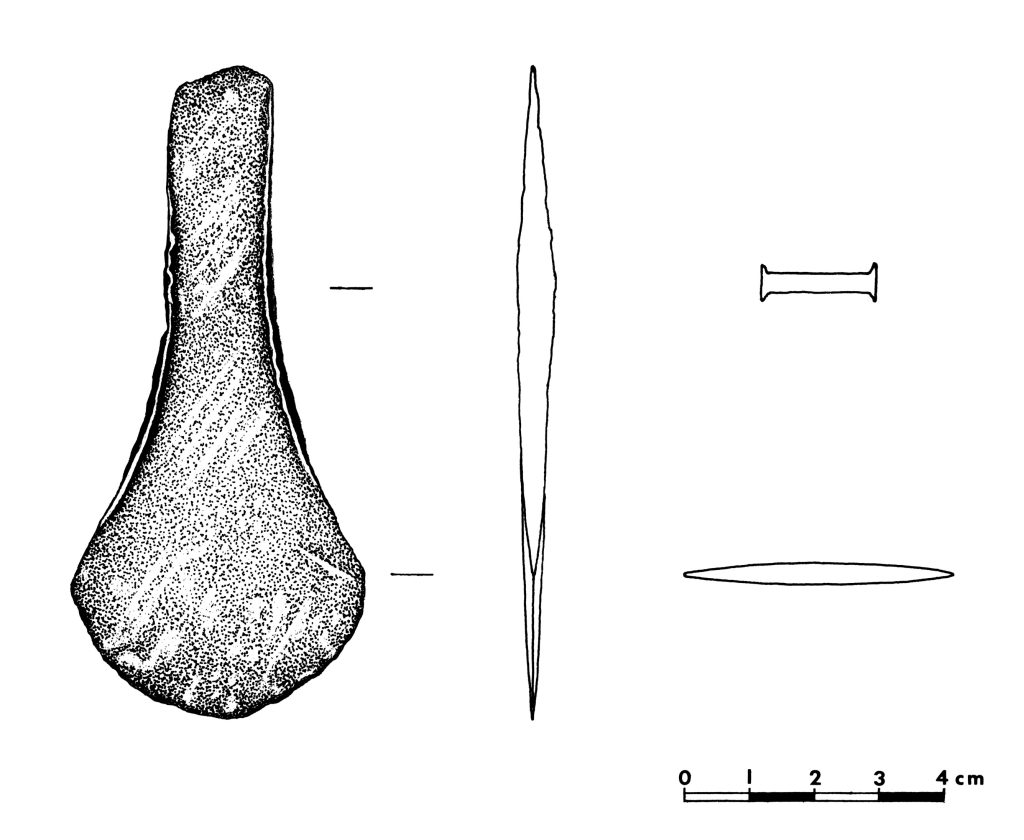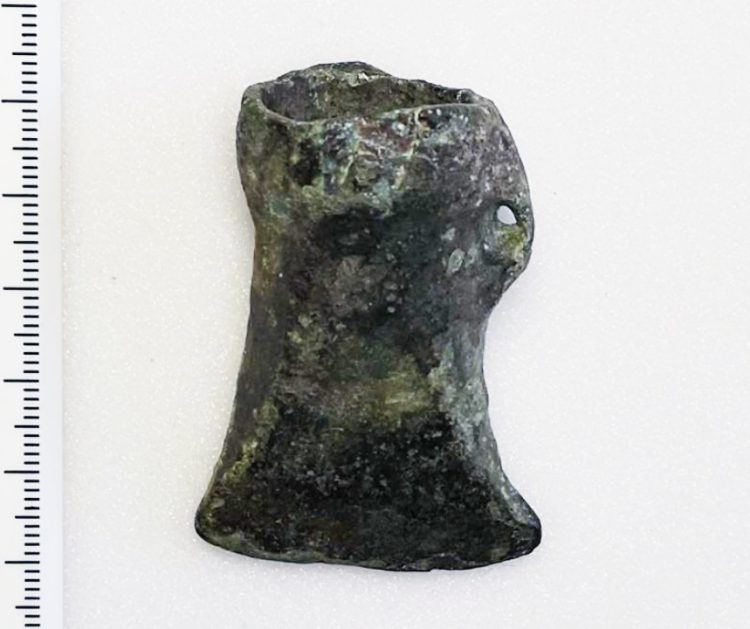Bronze axe with curved, semi-circular blade and flat neck (B3295/a). Low arches from the blade to the neck. According to the finder, the axe had the remains of a wooden handle. There is no trace of it now. It has a green patina, the edge has been sanded in modern times, and there is some corrosion on the arches. Langquaid type (Vandkilde’s type B4). Length: 22.3 cm Width: 10 cm across the widest part of the blade.
Bronze axe with curved, semicircular blade (B3295/b). The axe is broken in two and part of the neck and neck are missing. This appears to be old damage, before the closure of the axe, as indicated by marks around the break. Low arches from the blade, presumably to the neck. There is some corrosion and damage to the arches, there are also signs of hammering. Dark green patina, some golden spots and the edge has been sharpened in modern times. Langquaid type (Vandkilde’s type B4). Length: c. 16 cm. Width: 8.8 cm across the widest part of the blade.
A small arm ring formed from a bronze plate. (B3295c) The hoop has pointed ends, and one is broken off and missing. The surface has five rounded ribs that end in points at each end. It has a dark green patina and there is some corrosion towards the ends. The size indicates that it probably belonged to a child. A similar find has been found in Sweden and one in Poland. W 4.9 cm. Photo: Adnan Icagic © University Museum in Bergen, CC BY-SA 4.0
Location:
Steine (gnr. 18), Aurland, Sogn and Fjordane
Context:
Found in a clock, Grimuri, at Låvisberget by the water near the road to the sommerstølen. According to the finder, the axes and bracelet were lying on a large stone, possibly covered by smaller stones and soil.
Date:
The collection of finds dates to the Early Bronze Age period 1. Axes of this type are old and should be placed in the Early Bronze Age period 1b. The arm brace has few parallels, but those that exist are dated to the Early Bronze Age period 1.













































































